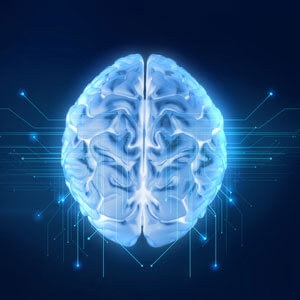 Most of us have, at some point, found ourselves drawn to things we know are not good for us — whether that’s food choices, relationships, certain exercise methods or even substances.
Most of us have, at some point, found ourselves drawn to things we know are not good for us — whether that’s food choices, relationships, certain exercise methods or even substances.
This is not a sign of weakness or “bad character”.
Modern psychology and neuroscience show that it often reflects the way our brains evolved to seek short-term rewards — a trait that in today’s environment can easily be overwhelmed.
The Science Behind Unhelpful Attractions
The brain’s reward system
The human brain is wired to seek pleasure and avoid pain.
Behaviours that promoted survival in our ancestors — such as seeking calorie-dense food, forming social bonds and exploring new opportunities — activate powerful dopamine-driven reward circuits.
Today, ultra-processed foods, high-intensity exercises, certain relationship dynamics and even substances can hijack this same circuitry, offering quick bursts of reward that can be difficult to resist.
Short-term reward vs long-term health
Humans are prone to “present bias” — we tend to value immediate comfort over future benefits.
Quick fixes, such as comfort eating or intense workouts for rapid results, often feel compelling, while the benefits of sustainable habits develop more gradually.
The role of stress and early patterns
Chronic stress, adverse early experiences or trauma can sensitise the brain’s threat and reward centres.
In these circumstances, turning to food, intense exercise or unhealthy relationships may become a way of soothing distress rather than a conscious choice.
In relationships, for example, we may feel drawn to familiar but unhelpful dynamics — a pattern sometimes described as repetition compulsion — because it feels “known”, even if it is not healthy.
Limited access to supportive relationships or effective coping skills can increase vulnerability.
Learning and modelling
We often learn habits by observing others — parents, peers or admired figures — even if those habits are harmful.
Behaviours become ingrained when they reliably reduce discomfort (for example, anxiety) or are linked to strong emotions.
A Holistic Approach to Change
Lasting change involves more than will-power.
It requires attention to the body, the brain and the mind.
Chiropractic and physical care
Some people think of chiropractic as a quick fix for back or neck pain, often seeking it only when discomfort becomes severe; however, chiropractic care provides more than short-term relief.
At its core, chiropractic aims to improve the way the spine, joints and nervous system work together. By helping the body to move more freely and restoring better postural and structural balance, chiropractic care supports the nervous system to function more smoothly.
This is important because the body and brain constantly communicate. Poor posture, restricted movement or long-term tension in the musculoskeletal system can send continuous “stress signals” to the brain. These signals can make the nervous system more reactive, which in turn can influence mood, sleep, decision-making and even our ability to break free from unhelpful behavioural patterns.
Regular, holistic chiropractic care is therefore not just about easing pain in the moment. It can be part of a long-term approach to well-being, helping the nervous system become calmer and more resilient. When the body is more balanced and less reactive, it is often easier to engage with mindfulness, healthy habits and other lifestyle changes that support lasting health.
Brain Photobiomodulation Therapy (B-PBT)
Brain Photobiomodulation Therapy (B-PBT) supports healthy brain function by using specific wavelengths of light to influence cellular activity and energy production in the nervous system.
This gentle, non-invasive therapy may help to improve focus, support stress release and make it easier for people to move away from automatic, unhelpful responses. By enhancing the brain’s ability to regulate itself, B-PBT complements both chiropractic care and mindfulness practices in promoting long-term well-being.
Mindfulness-based therapy
Mindfulness — particularly in its non-dualistic form — helps people notice thoughts, sensations and feelings as temporary experiences rather than instructions to act.
It can:
• Encourage a pause before acting on urges
• Reduce stress reactivity
• Strengthen self-awareness and self-compassion
• Support sustainable lifestyle choices
Evidence-based steps to support change
• Psychoeducation & self-awareness – understanding these patterns can reduce self-blame
• Mindfulness-based approaches – train the brain to pause before acting on impulses
• Therapeutic support – approaches such as Cognitive Behavioural Therapy, Acceptance and Commitment Therapy, trauma-informed or attachment-focused therapy can help develop healthier coping strategies
• Social and environmental supports – reducing exposure to triggers and building access to safe, rewarding alternatives
Moving Forwards
People do not consciously choose harm; the brain is often drawn towards short-term rewards, stress relief and familiar patterns. Recognising this helps to reduce shame and opens the way to more effective solutions.
If you recognise some of these patterns in your own life, you are not alone — and it is not a sign of failure. Understanding why these pulls occur is the first step; the next is having the right guidance and tools to shift the underlying patterns.
Our integrated approach at Harvey Young Advanced Holistic Therapy— combining chiropractic care, B-PBT and mindfulness-based strategies — is here to support you on this journey.
CONTACT US
